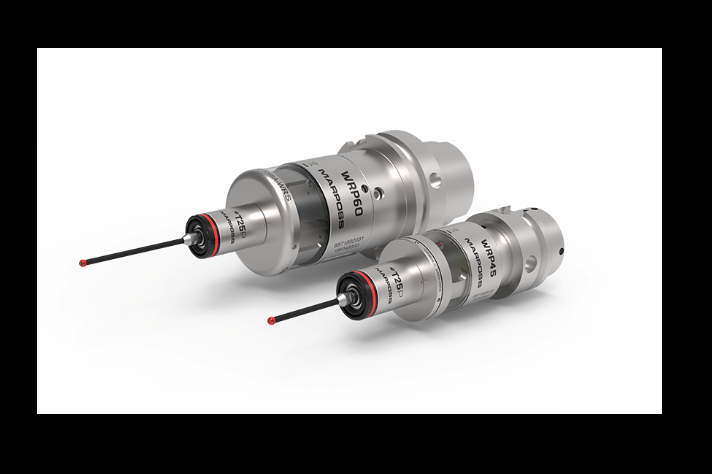Probing Line Comes With Multichannel Radio Transmission for Highly Accurate Die and Mold Measurements
Marposs is demonstrating its high-precision probes with radio transmission at IMTS 2022, which, through automatic detection of machine axis position, can achieve part positioning and accurate part measurement.

Photo Credit: Marposs
At IMTS 2022 in booth #135621, Marposs demonstrates its WRP60P high-accuracy touch probes with multichannel radio transmission. These probes are designed for high-accuracy five-axis machining centers and milling machines, which address high-precision industries such as die and mold, aerospace, aeronautics and biomedical, redefining the rules of machine part measurement.
Through automatic detection of machine axes position, the WRP60 is reported to achieve part positioning, workpiece orientation and origin identification, as well as accurate part measurement. Based on piezoelectric technology, Marposs says the probes provide excellent measurement performance on 3D surfaces with repeatability within 0.25 µm. Moreover, the WRP60 is said to go beyond other high-precision probes in that it is not sensitive to noise and vibrations. Relying upon a special filter, the probes are able to distinguish false-triggering events from actual touch events.
The probes, which operate with the WRI receiver, have a range of 15 meters, making them well suited for large machines; it is also capable of inspecting complex surfaces and deep cavities, as a line of sight between the touch probe transmitter and receiver is not required. The probe’s modular structure and extensions enable measurements may be performed at depths as great as one meter.
According to Marposs, several types of applications are available. The multichannel transmission and option to choose the proper channel enables each application to support up to four probes, all managed by the same WRI receiver. Additionally, the probes used in conjunction with the WRTS tool setting system can be used for twin applications so that users can check the part and the tool using the same WRI receiver. Multispindle applications can also be achieved by installing two applications on the same machine, enabling two probes to be used simultaneously.
Related Content
-
Hands-on Workshop Teaches Mold Maintenance Process
Intensive workshop teaches the process of mold maintenance to help put an end to the firefighting culture of many toolrooms.
-
How to Achieve the Best Mold Finish
A look at factors that impact the polishability of tool steels and recommendations for obtaining a high-gloss finish.
-
The Secrets to Hard Milling Success
The Secrets to Hard Milling Success











